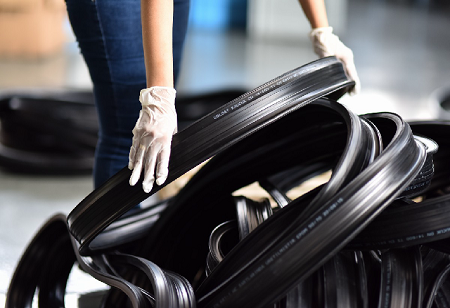
Leaders in the rubber industry must be prepared to develop and implement creative strategies tailored to their organization's unique needs. Market changes must be anticipated and responded to quickly. In order to motivate their teams, they must foster a collaborative environment within their organization. They must also be aware of the latest technological advancements and be equipped to leverage these tools to maximize team productivity. Additionally, they need to be equipped to develop a long-term vision and guarantee that their team works towards it. Rubber industry leaders must be willing to take risks and try new ideas to stay ahead of the competition. They must also be flexible and agile in their decision-making process. Regular evaluation of strategies and performance is essential to ensure that the team is on track towards their long-term goals. They should also be able to inspire and motivate their team to keep pushing forward and take ownership of their work. Finally, they must be able to identify and use the best practices and resources available for their team in order to ensure success.
Some of the Strategy Implementation Suggestions for effective rubber industry leadership are -
By establishing customer focus and leveraging digital strategies they can build a customer-centric culture and drive results. They should be able to identify opportunities for improvement and create solutions that maximize efficiency and reduce costs. This will enable them to make better decisions and create more value for their customers. They should also strive to create a customer-first mindset and continuously strive to improve customer experience. They should use data and analytics to measure performance and identify areas for improvement. They should also be open to new ideas, technologies, and approaches to solve problems and improve processes. Additionally, they should have the ability to communicate their ideas effectively and collaborate with others. For instance, they might use data visualization tools to demonstrate a complex concept to a wider audience, or involve stakeholders in the decision-making process to ensure that everyone is on the same page. For instance in Rubber industry , they might use predictive analytics to proactively detect anomalies in the production process and identify corrective actions to minimize downtime and maximize efficiency.
It is imperative to stay up to date with the latest developments in the industry, such as changing regulations, technology, and customer expectations. Companies should also be able to identify opportunities to leverage cutting-edge technologies and trends to gain a competitive advantage. Lastly, it is essential to have a plan for responding to unforeseen events and challenges. It is important to anticipate change and adjust strategies quickly. Developing the right skills and resources will help businesses stay ahead of the curve and remain competitive. Companies should also have the flexibility to pivot their strategies and take advantage of new opportunities. Acting quickly and decisively in response to changing market conditions is the key to success. Companies must also be agile and proactive to stay ahead of the competition. For instance in the Rubber industry , the decline in demand due to the Covid 19 pandemic forced many companies to switch from manufacturing tyres to producing rubber gloves
They should also be willing to adapt team oriented strategies when necessary and open to feedback. They should be able to possess strong communication skills to effectively communicate with their team about the same. They should be able to motivate their team to achieve desired goals and stay focused. They should also be willing to delegate tasks and trust their team to complete them successfully. Finally, they should be capable of providing timely and constructive feedback. They should also be able to remain calm under pressure and manage their time wisely. For example, team leaders are expected to understand the process and sequence of steps in rubber product manufacturing, so that they can anticipate any issues and solve them quickly.
Finally , Leaders in rubber manufacturing should lead by example and be open to team feedback. They must also inspire and motivate their team to reach their goals. Finally, they should be able to identify and nurture talent and create a positive work environment. They should be able to recognize the value of collaboration and empower their team to take risks and own their projects. They should also be able to provide timely and effective feedback to help their team grow and develop. they should be able to foster a culture of learning and growth.
We use cookies to ensure you get the best experience on our website. Read more...